I remember the first time I heard the word “snag” in reference to a standing dead tree. While touring Edwina von Gal’s property as part of a Garden Conservancy Open Day, von Gal pointed out a decaying tree with pride, telling the visitors about the snag’s many wildlife benefits: It would provide a home for insects, which would attract woodpeckers, who would make holes that would become home to dozens of species of cavity-nesting birds—and when it eventually fully decomposed, it would nourish the soil.
After that, I noticed snags, also known as “wildlife trees,” everywhere I went: On walks through the woods and even on New York City streets. However, one place I didn’t see snags was in people’s yards. As much as they benefit our ecosystems, gardeners don’t seem to love their somewhat rugged appearance.
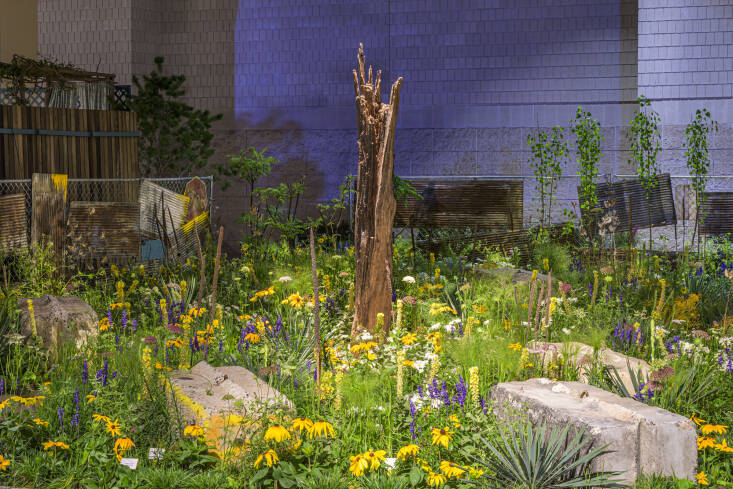
Seeing a dead tree left standing in a garden is unusual, but seeing one in the center of a show garden at the Philadelphia Garden Show was even more so. But that’s exactly what visitors encountered in Kelly D. Norris’s ‘A Beautiful Disturbance’ garden. Norris describes the design as a recreation of “an abandoned lot, an artifact of the human-urban century, that finds new life as a novel ecosystem.” It was also a celebration of how nature quickly fills the void. Norris chose to put a dead tree trunk in the center as a symbol of the imagined garden’s past.
Norris has left a few small dead trees on a slope of his own yard. They have become an informal trellis for trumpet vine and Virginia creeper. “It adds both to the layers of the hedgerow,” says Norris. Then, this past winter, a large hackberry that Norris fondly calls “the Queen” split; Norris says he hopes to “negotiate a truce” with his neighbor to leave part of the tree and let it slowly decline. “It’s a beautiful tree and it’s heartbreaking to deal with the idea that it’s not going to be there anymore,” he says. “I’m asking myself, ‘How could we just honor its life and just give it more life?’ ”
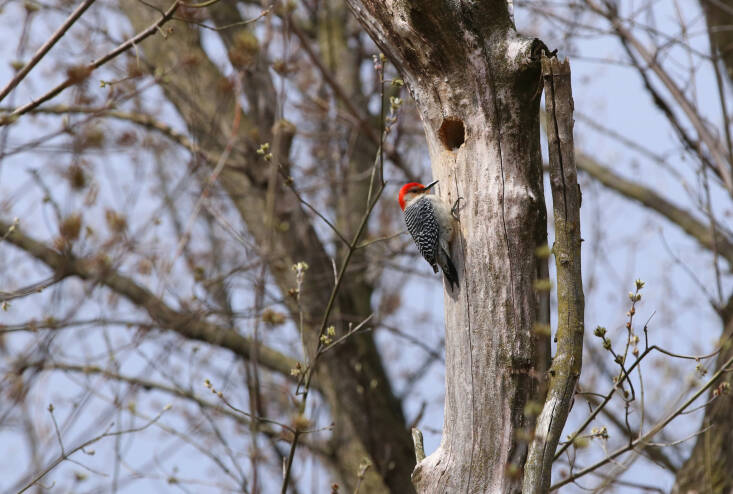
It’s a sentiment Tama Matsuoka Wong, the author of Into The Weeds, shares. When an ash tree near Wong’s house succumbed to emerald ash borer, she asked the arborist to remove the hazardous upper limbs only. “As a standing trunk it is fine,” says Wong. “You don’t need to chip it all the way to the ground or take out the roots: A standing dead tree can provide rich organic nutrients and shelter for a host of animals, birds, insects, and seedlings, as well as fungi.” Now Wong is treated to frequent visits from pileated woodpeckers.
Ecologically-minded garden designers like Norris, von Gal, and Wong are increasingly encouraging their communities to consider trimming hazardous branches and leaving the dead trunks standing. Safety is, of course, the first concern, and in some areas dead trees may also pose a wildfire hazard, so always consult with a seasoned arborist if you have a dead tree you’d like to keep.
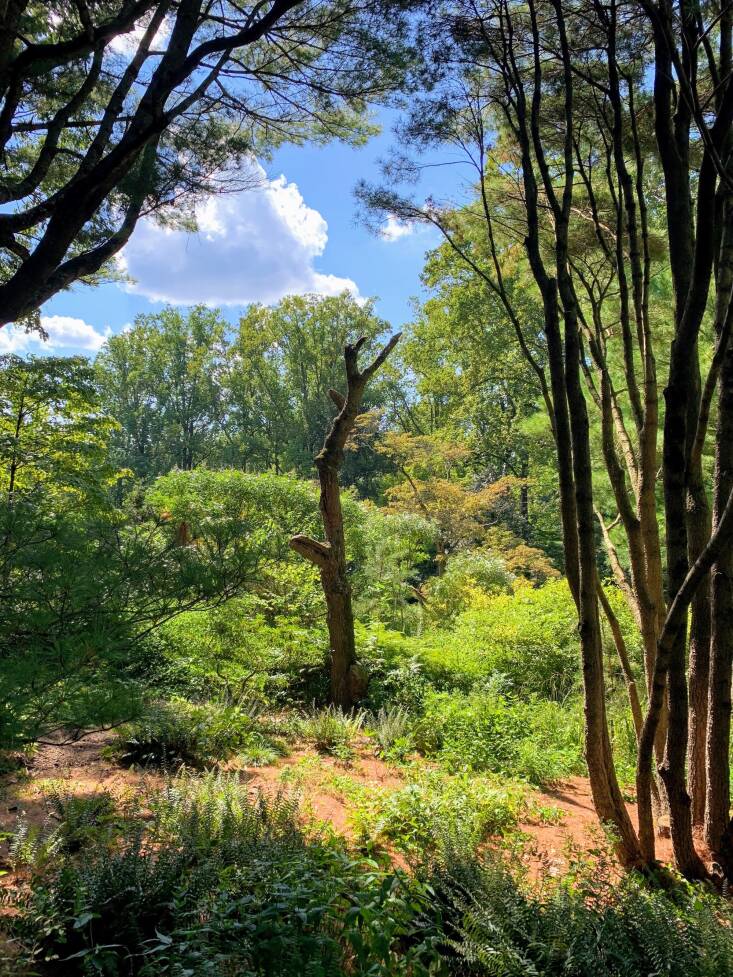
If you do determine you can save part of a tree, Norris says the trick to snag success is to convey intention. “When people see snags and decay, they tend to associate those cues with a lack of care,” Norris says. “If somebody in a small yard wants to leave a stump or a snag, it needs to be the most well-loved snag in the neighborhood.” When Heather Evans, the founder of Dear Avant Gardener, had a tree on her property die, she asked her arborist to strategically cut it into a safe and sculptural shape like she’s seen done at the Mount Cuba Center. However, the tree man was perplexed, so Evans took a photo of the tree, printed it out and showed him what she imagined.
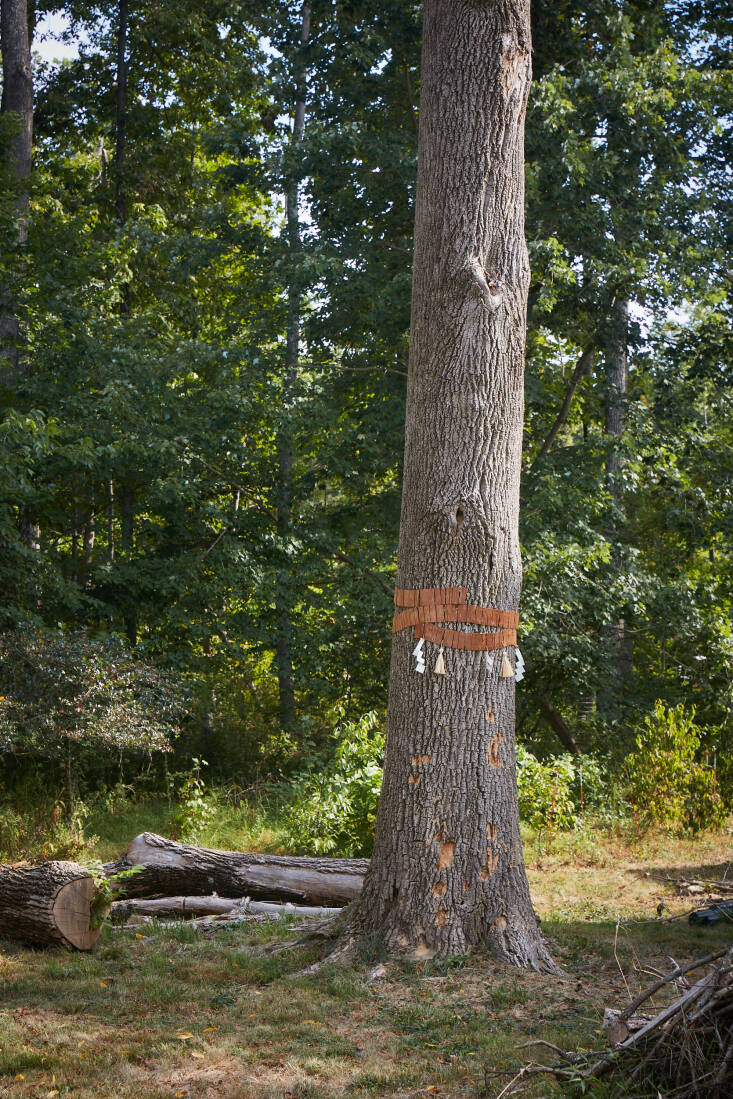
Wong suggests going one step further. “You can mark these trees in the Japanese Shinto tradition of respect by wrapping them with rope or hanging cord with raffia tassels or white paper streamers from them,” says Wong. After removing the upper canopy of her ash, Wong celebrated her snag with decorations.
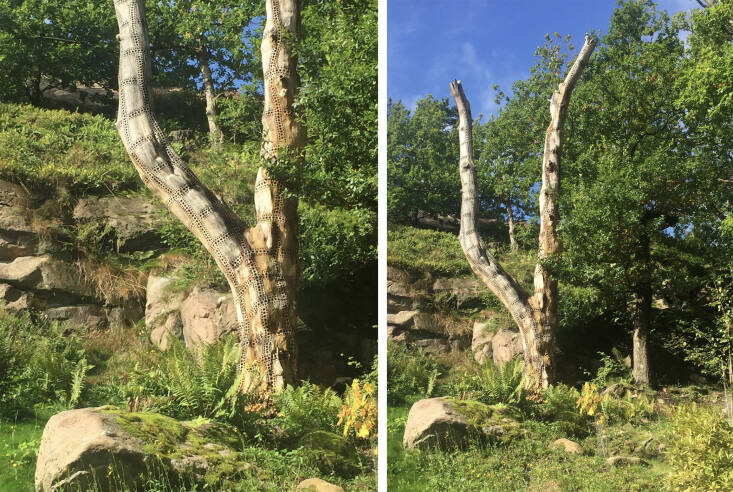
Public gardens like the Mount Cuba Center that incorporate snags may be key to persuading homeowners to embrace the wildlife tree. Another example is Sweden’s Gothenburg Botanical Garden, where a large snag was left standing. “Rather than take down an existing tree that has died, it has been allowed to stay and become art,” says Carrie Preston, the landscape designer behind Studio Toop and an admirer of the snag. The old tree has hundreds of holes drilled into it. “The holes not only become a graphic pattern, but create habitat,” says Preston.
Another tactic to help the neighbors understand your choice? Evans suggests “a combination of artful landscaping and proactive communication.” She suggests getting your yard certified as a wildlife habitat, noting that there are several local and national programs, including the National Wildlife Federation’s program. “Announcing it with a sign will also suggest that your snag and other ecological features are intentional, not neglect,” she says.
See also:
- Log Pile Habitats: Build It and They Will Come
- Habitat Piles: Turning Garden Debris Into Shelter and Sculpture
- The Bug Snug: An Easy, Free DIY Project for the Garden







Have a Question or Comment About This Post?
Join the conversation